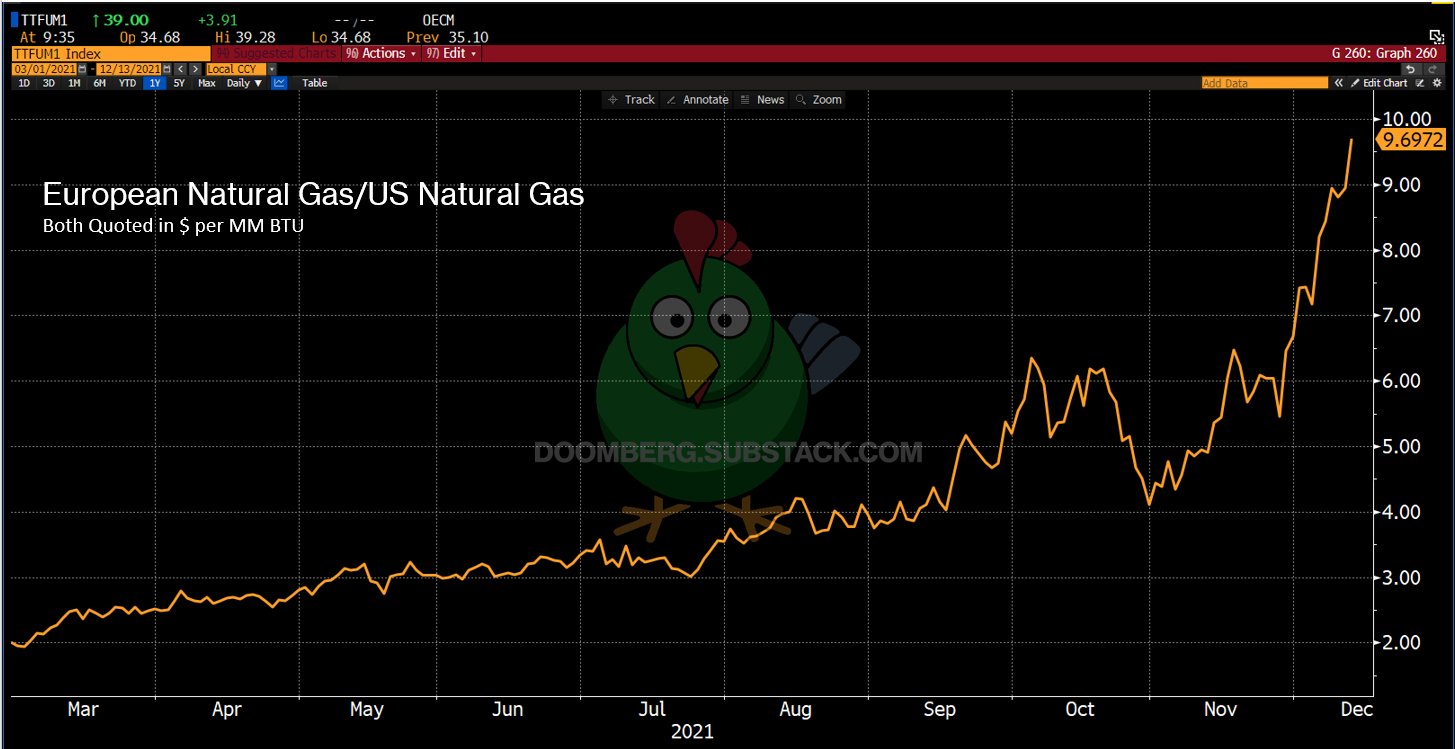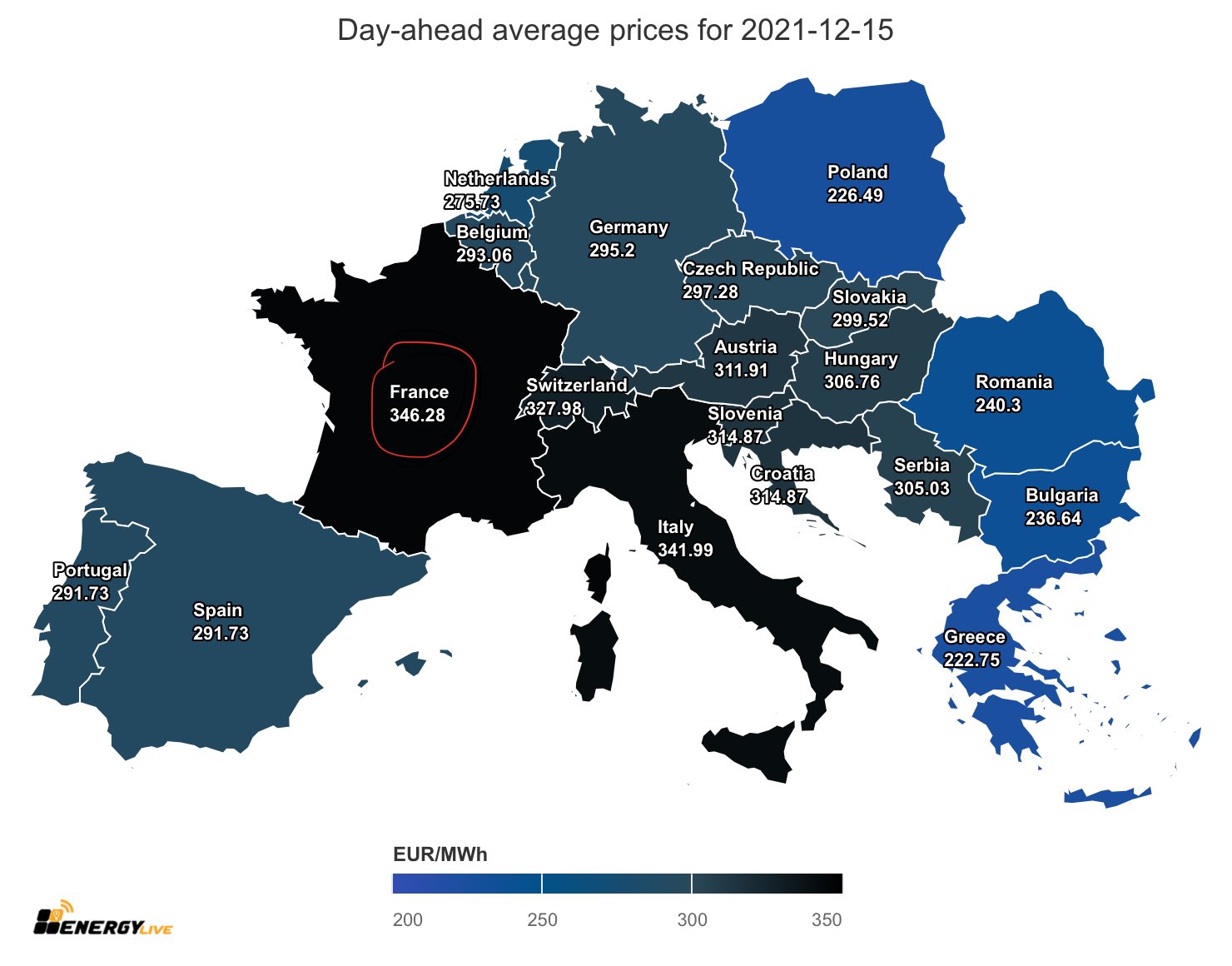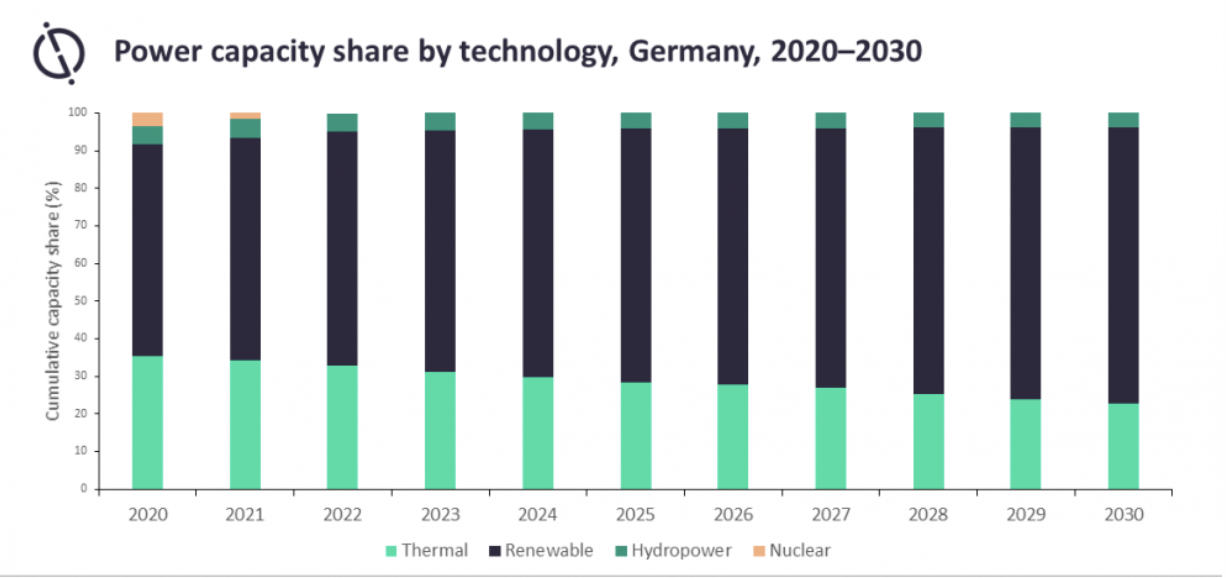Europe’s energy crisis has been aggravated by its policy choices designed to stifle investment in fossil fuel projects and encourage renewable energy. All of this is ostensibly to reach a net zero carbon future, which is literally impossible in that fossil fuels are needed to make renewable energy technologies. The result has been record-high energy prices, blackouts and economic dislocation, placing more Europeans into energy poverty where they cannot pay their energy bills or have to choose not to heat their homes.
The dire situation has prompted Senator John Barrasso (R-WY) to comment, “The upheaval in Europe is giving us a preview of the economic fiasco caused by underinvesting in reliable and secure fossil fuels. For Democrats, Europe is a model. For the rest of us, it should be a warning.”
Natural gas prices in Europe are five times what they were in early 2021 and they are approaching 10 times the equivalent price in the United States. The European electricity grid has increasingly been delinked from reliable and affordable fossil fuels to more expensive intermittent wind and solar technologies. When wind and solar are not available, European nations are accessing oil, natural gas and coal resources they have deliberately limited, resulting in fuel prices soaring. Europeans are paying twice for electricity: they are paying for the sunk costs of existing fossil fuel technologies (and nuclear in some countries) and again for renewable-based electricity projects.

The fossil fuel share of electricity production in the European Union declined from about 50 percent in 2000 to 35 percent in 2020, and nuclear-generated electricity declined from 32 percent in 2000 to 25 percent in 2020. That compares to renewables’ (including hydropower) share of electricity production, which more than doubled, from just over 16 percent in 2000 to 38 percent in 2020. Unfortunately, solar and wind are not as reliable as fossil fuels and they are not inexpensive. In Britain, when wind power dropped, the country had to turn to coal to prop up the country’s electricity grid.
Average electricity prices during the middle of December were above €300 ($338) per megawatt hour in France, Switzerland, Austria, Italy, Slovenia, Croatia, Serbia and Hungary. That’s 3 times higher than in the United States. (See graph below.)

The Case of Germany
As early as 2000, Germany implemented the Renewable Energy Sources Act, which supported the buildup of renewables under an expensive feed-in tariff scheme. As a result, installed solar-photovoltaic and wind capacities increased 13-fold from 6.2 gigawatts to 83.8 gigawatts between 2000 and 2015. During this time, Germany accounted for 33 percent of the renewable buildup within the European Union.
Following the impact of the 2011 Fukushima Daiichi nuclear accident related to a tsunami, German Chancellor Angela Merkel decided to phase out the country’s nuclear power stations by 2022. The nuclear phase-out is on course to be completed by the end of next year following more than a 60 percent cut in capacity over the past decade. Between 2010 and 2020, installed nuclear capacity across the country declined from 20.5 gigawatts to 8.1 gigawatts and is expected to reach 4.1 gigawatts by the end of this year.

Germany has been at the forefront of solar PV technology since 2000. The nation launched the 100,000 rooftop program in 1999 and set a target for the share of renewable energy sources to make up 65 percent of the country’s power by 2030. Under the Energiewende policy, the country plans to increase its solar PV capacity to 100 gigawatts by 2030.
By 2020, Germany obtained 44 percent of its electricity from renewable fuels (most of which was solar and wind), 40 percent from fossil fuels and 11 percent from nuclear. With that level of intermittent renewable energy, grid operators in Germany struggle to keep the system running. Aluminum and steel plants are being shut down and cities face blackouts. Unfortunately, the seriousness of the situation is not recognized in politics and by the media. German politicians are awaiting Nord Stream 2 to come on line and supply the country with Russian natural gas, whose price and availability will be controlled by President Putin. If Nord Stream 2 does not come about, the prediction is that the lights will go out in Germany.
Conclusion
Energy is becoming more expensive and unreliable in Europe to the point that average electricity prices are 3 times those in the United States and natural gas prices are almost 10 times as high. Unfortunately, the politicians in Europe are oblivious to the issue and are continuing their goal of a net zero carbon economy believing that the situation will heal itself. Instead of the United States learning from their folly, the Biden administration is following the same path, telling Americans that the transition is needed to quell climate change regardless of the cost and seemingly unaware of the insignificance of these actions on any climate models. The chance of dying from a climate-related disaster is 1/50 what it would have been 100 years ago. That is, we are 50 times safer from climate in terms of mortality and yet, the Biden administration wants us to view it as an emergency and support increasingly draconian policies. Americans and the Biden czars need to learn that coal, oil, and natural gas are essential for continued human flourishing and environmental progress, before the significant damage being done by similar policies in Europe visits our shores.



